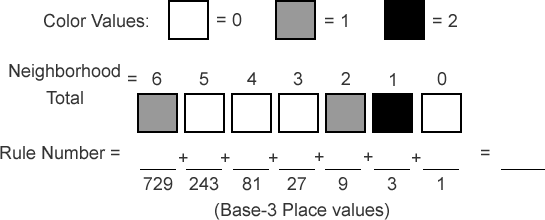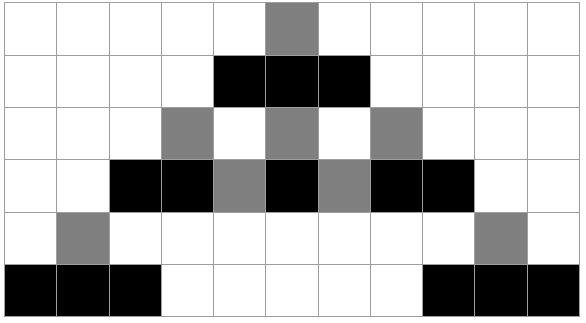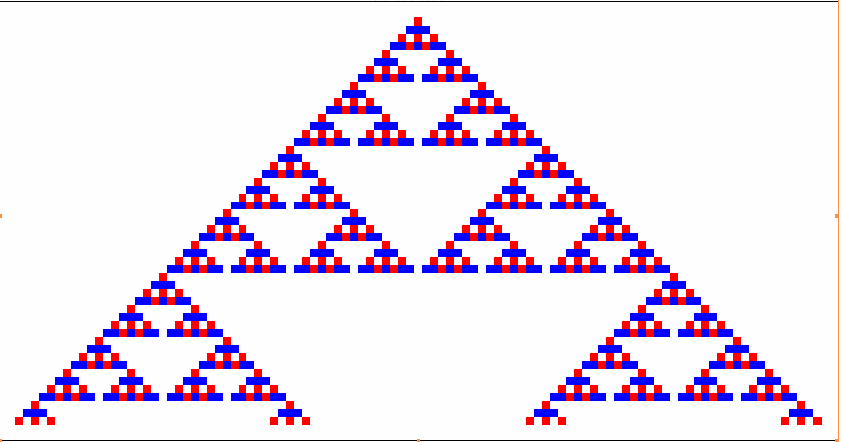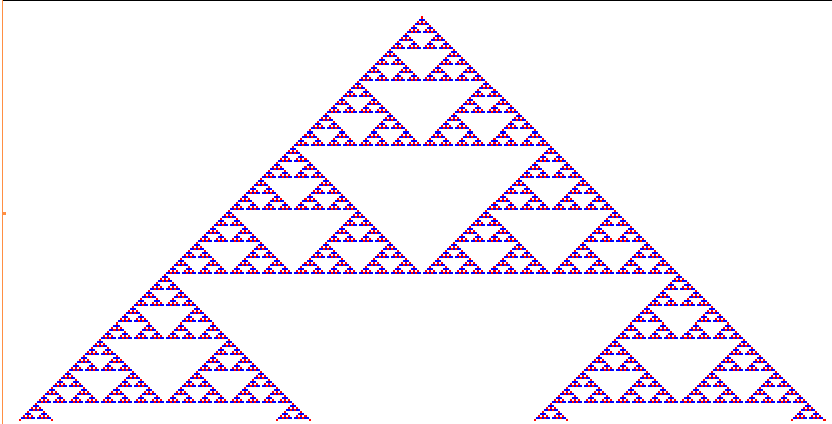 The graphic at the right shows a typical totalistic rule.
The graphic at the right shows a typical totalistic rule.
The top row tells us that in each neighborhood a white square has a value of zero, a gray square has a value of one, and a black square has a value of two.
The middle row of the rule tells us that if the total value of the neighborhood cells is zero, the current cell becomes white in the next generation. If the total value of the neighborhood cells is one, the current cell becomes black in the next generation. If the total value of the neighborhood cells is two, the current cell becomes gray in the next generation, and so on.
The bottom line of the figure at right helps us calculate the Wolfram code for the rule, which can be expressed as a 7-digit base-3 number. The Wolfram code for the rule shown at the right is (1 x 729) + (1 x 9) + (2 x 3) = 744.
 |
Here are the first 5 generations of the Rule 744 totalistic cellular automaton.
|
|---|---|
 |
At left is an imagie of the first 50 generations of the Rule 744 automaton. The colors have been changed to white, red, and blue. |
 |
Here are the first 200 generations of the Rule 744 automaton. |
Use the Cellular Automaton Explorer to generate some totalistic automata. Save some of the ones that you think are interesting in a Word document (like before), and give a brief statement of what you find interesting about them.
You may also try some of the other options of the Cellular Automaton Explorer - be sure to save the image of anything you find interesting.
Although you can generate some totalistic automata that are different from the ECAs you generatied earlier, aren't you surprised that generalizing the rules for generating automata, and enlarging the set of possible states (colors) didn't really change the character of the results very much - the new automata still look much like the ECAs. What does this suggest?